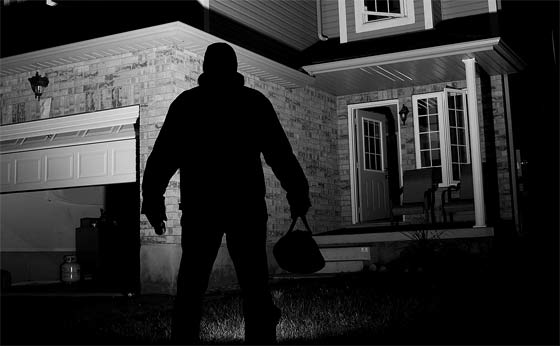Home Security And Safety – Don’t Be Complacent
The most serious obstacle to personal safety and home security is an attitude of complacency, or normalcy bias. “It won’t happen to me.” “There aren’t any burglars around here.”
A burglary can happen at anyone’s home. Anywhere. However there are precautions you can take and deterrents put in place by simply taking on more responsibility for your own home security and safety.
Consider the following guidelines while reviewing your home security:
All entrances should have quality ‘bump-resistant‘ locks – preferably deadbolt locks. Check your doors:
– Front
– Rear
– Garage
– Patio
– Sliding Glass Door
– Gate
– Swimming Pool Gate
Hidden Keys: Best and Worst Places to Hide a Spare House Key
Keep doors locked even when you or family members are at home.
Keep windows locked.
Consider window grilles and bars, but be aware of fire safety. Don’t block bedroom windows with permanent grilles if the windows might be used for emergency egress.
Consider keeping a purpose-made portable window rope type ladder to drop out the window of 2nd floor bedrooms for egress (fire or otherwise).
Plan multiple escape routes out of the house in case of fire.
If you have burglar or intrusion alarms, check and use them, even on short errands. Know the codes. Make it habit.
Use a doorstop alarm on any entrance door, and/or a door jammer security bar.
Keep at least one fire extinguisher on each floor, preferably one in each bedroom, and be sure to keep one in the kitchen.
Know how to put out a grease fire.
Periodically check/test smoke detectors and carbon-monoxide detectors, and know that they do have a shelf life – and replace batteries annually.
Keep flashlights in several areas in the house, preferably in each room, and near you bed at night. Check the batteries often, especially if you have children in your home. (They love to play with flashlights!)
A family dog can be a deterrent to criminals. Do not install separate “doggy doors” or entrances. They also can admit small intruders.
Have multiple methods/tools for personal defense and home security. Regularly devote practice time with these ‘tools’ so that you become comfortable and proficient with them.
Know your neighbors. Develop a rapport with them and offer to keep an eye on each other’s homes, especially during trips.
Maintain reasonable skepticism of strangers at the door trying to sell you something. Sometimes these people are casing the joint, so to speak…
Be observant of any unusual activity. Again… be observant. Situational awareness.
21 Things Your Burglar Won’t Tell You.
Install outdoor motion detector lights (in the front and rear).
Install real (or fake) security cameras.
While at home, you and your family should rehearse safety drills and be aware of procedures to escape danger and get help.
Vary your daily routines – your coming and goings; avoid predictable patterns.
Know where all family members are at all times.
Set up a safe-room in your home. Designate an internal room. Furnish the safe-haven with an emergency kit. Install a telephone there or be sure to have a method of outside communication in the room.
Children:
Teach children never to admit strangers into the home.
Teach them local emergency phone numbers. Make sure younger children know their name, address, and phone number.
Caution teenagers about “blind dates” or meeting anyone they do not know.
Teach the young one’s how to answer the telephone so that they do not give out personal information, such as home address, absence of adults, etc.
Teach them how to say no to strangers.
Teach them how to exit the house in case of emergency.
Add your own home security and safety tips in the comment section below:

